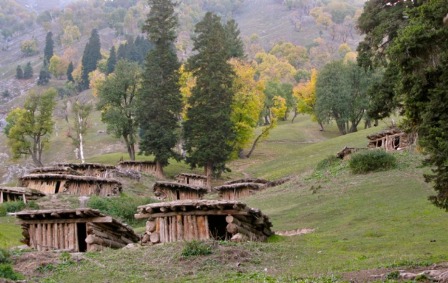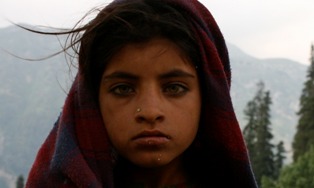Jammu : Among the numerous scarred inhabitants of Jammu and Kashmir are the nomadic Gujjars, whose languid rhythm of life and simple traditions are dying a gradual death due to the over two-decade long militancy in the state.

Thousands of Gujjars have for centuries moved to mountainous pastures along with their cattle in summers and returned to the plains in winter before snowfall. But with insurgency persisting, most of these tribes are forced to stay put in the plains around Jammu and other areas, adversely affecting their culture, lifestyle and habits.
According to official statistics, there are about two million Gujjars in Jammu and Kashmir, of whom around 500,000 are nomadic. They live on rearing buffaloes, sheep, goats and horses.
“Caravans of thousands of Gujjars move to mountainous pastures from plains through eight main routes crossing Shivalik and Pirpanjal ranges. The up and down journey takes 45 days each,” Javaid Rahi, secretary of the Tribal Foundation here, said .
He added that the entire journey is conducted in a “very organised manner”.
“First, one caravan starts and then others keep following after specific intervals so that a particular distance is maintained between caravans to avoid crowding,” he explained.
But for the past few years, many of these nomadic Gujjars have settled in the plains “due to fear of militants and grilling by security forces”.

Shamas Din is one of the nomadic Gujjars who settled in Vijaypur, about 30 km south of Jammu, along with his clan in 2000.
“There were lots of militants on mountains who used to intimidate, scare and harass us. They used to demand food and take away our cattle and milk. Then, the security forces trailing the militants would harass us by interrogating us at gunpoint to know about the militants’ whereabouts. And if we revealed their locations, they (militants) would kill us,” he said.
Shamas was nostalgic about the life he led earlier.
“That life was like the happiness and cheerfulness of a high-flying bird. The life I am leading now is like a prisoner living in jail,” he sighed.
He said living in the plains has made Gujjars physically weak too, as they are deprived of the food and air of the mountains. “We used to have lots of milk and milk products. But now, we sell it all to earn our livelihood and pay for land rent and cattle fodder,” he said.
According to Gujjar leader Hasham Ali, the community’s culture and traditions are under threat as well.
“Earlier, when we used to move, we wore traditional dress with turbans. And women too wore typical salwaar-kameez with headgear. We had specific tailors who used to stitch the dresses. Now, the Gujjars have started wearing local dresses of this area.”
Rahi added: “When they are forced to relinquish water, air, herbs of mountainous areas and their primitive cultural treats which were associated with their existence, then of course it will impact their living and psyche.”
He is concerned that with 40 percent of nomadic Gujjars having settled in plains, the entire “tradition of moving may go extinct”.
But he says living at one place has benefited them in one way.
“The Gujjars are now making their children study in schools and have started doing jobs – both private and government,” he said.
IANS



